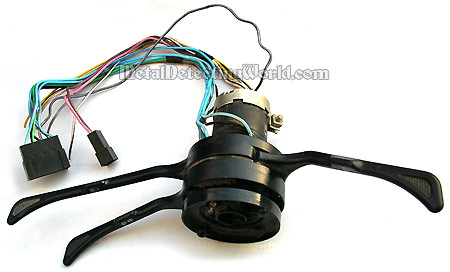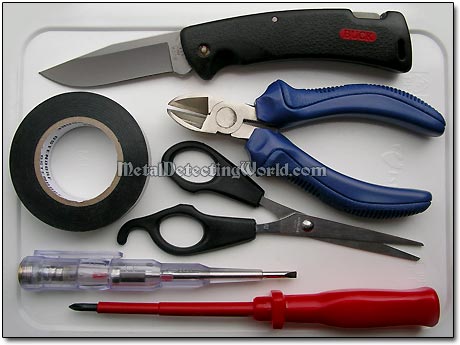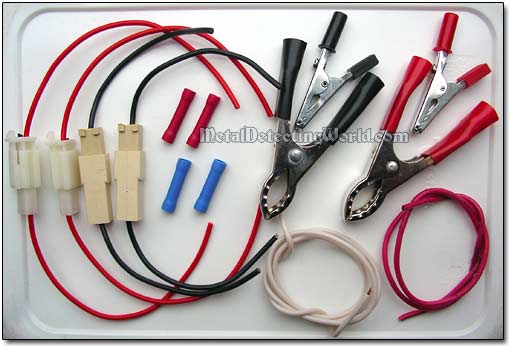How To Clean Coins and Jewelry with Electrolysis - An Illustrated Tutorial, page 5
Making Coin Electrolysis Machine of "CLASSIC" Type
(...CONTINUED from Previous Page)
Basic Electrical Tools, Accessories and Anode/Cathode Connecting Sets
To construct a DC power supply for the electrolytic coin cleaning, you need to make the anode/cathode connecting sets with alligator clips which will connect the anode and your coin to the positive/negative terminals of your DC adapter.
Regular coated stranded wires of gauge 14 (1.63mm) or 12 (2.06mm) - the smaller the gauge, the larger the conductor's diameter, can be used for anode/cathode connecting sets and will be sufficient enough for the 12v/700mA current to flow without overheating the DC adapter.
To be easily and safely identified, your anode-connecting wire should be of RED color which always corresponds to POSITIVE. For the cathode connection, I use WHITE or BLACK wires.
You can buy wires at any auto electronics supply and hardware store, or you can cut the wires off the car's turn-signal and lever assembly that can be found at any auto junkyard.
Turn-Signal and Lever Assembly of Old Car

Tools for Electrical Wiring
It does not take special skills in electrical wiring to make the connecting sets, but one needs certain tools for accomplishing this task. For this project, I used the following tools and accessories:
1) Sharp Pocket Knife is used simply for splitting the wire casing, and sliding plastic coating/insulation off the wires (if a wire stripper is not available).
2) Side Cutters with a Crimp-On Part (between handles), also called side snips, are used for cutting both electrical wires and their terminals stripped of insulation, and for crimping wires.
3) Electrical Tape is used for insulating the spliced wires to avoid accidental short-circuiting.
4) A Pair of Scissors is used for cutting whatever.
5) Philips Screwdriver is used for securing the wire on the alligator clips.
6) One-Contact Neon-Lamp Tester Screwdriver (optional) - This wire-continuity tester is used to determine if an electrical path can be established between two points, i.e. if an electronic circuit can be made. The circuit under test must be completely de-energized prior to connecting the device. Please read the instructions carefully before using this electrician's tool.
Tools for Electrical Wiring

I did not include another electrician tool - wire stripper, because removing insulation from the cut end of an insulated wire can be easily done with a sharp pocket knife (as shown on next page). However, some people may argue that stripping insulation with a pocket knife may result in nicked wire, and they are right, but having a few nicked wires is not really crucial for this project. And since I have done wire stripping without difficulty since I was a kid, I just did not want to waste any more time looking for a wire stripper; however, here it is...
Wire Stripper

In case you need it, the wire stripper can be bought at auto supply and hardware stores. Some strippers are designed for SAE (Society of Automotive Engineers) wire, which is about 10% smaller than AWG (American Wire Gauge). So if you use these wire strippers on AWG wire, they would nick it. But, again, this is not critical for making the electrolytic coin cleaner, and only if you want everything to be perfect, be sure the wire stripper you buy is intended for AWG wire.
You will also need a few alligator clips, battery clamps (if you plan to build the "Pipe Type" Coin Cleaner), Male/Female connectors (to switch between connecting sets), and blue and red Butt Splice Connectors (unless you solder the wires).
Alligator Clips, Battery Clamps, Connectors and Plastic Coated Stranded Wires
